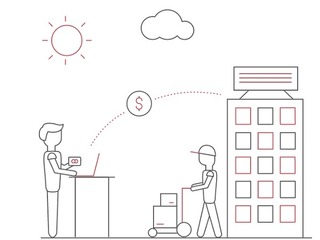How does Course Hero make money?
The company offers a freemium model, where users can pay to access more content and ask questions
Read more...
Subscription billing is becoming the dominant business model for bringing a product to market in a SaaS environment. What that means is that businesses have to cater to the whim of customer, who will have more options and flexibility than ever before.
That is where Zuora comes in. Founded in 2007, by CEO Tien Tzuo, the company offers a Relationship Business Management (RBM) platform to help organizations establish and build long-term relationships with subscribers.
Z-Business, the company’s a cloud-based subscription billing service provides pricing flexibility for different customer groups, scalability, and key metrics. All of these features are designed to help any company develop a subscription business.
Users are enabled with elastic pricing and packaging, improved subscription metrics and consolidated billing, finance and commerce processes focusing completely on consumer relationships.
It also helps its business customers on the back end helping them recognize revenue opportunities, helping them track transactions over time and which way to post invoices.
Z-Insights enables subscription businesses to better understand who their subscribers are: how they use their product, what they like, and what they don't like. By surfacing customer usage patterns over time, Zuora helps subscription businesses deliver personalized, compelling and engaging experiences.
Zuora currently serves close to 700 customers around the world, across a range of industries, including media, technology, consumer packaged goods, cloud services and telecommunications. Customers include Intuit, Financial Times UK, Box, Vivint, The Guardian, Schneider Electric, Honeywell, NCR, RTL, YP.com, BlueJeans, TripAdvisor, lynda.com and Trulia.
The company makes money through the fees it charges its customers, including an upfront fee for equipment or service activation, which is a one time payments; recurring fees, which include a flat monthly rate, per unit sold, or per user; and usage fees, in which it charges based on how much product the customer used, whether per minute, per article, or per gigabyte.
What's interesting about Zuora is that it does not have set fees. Instead it offers what it calls "dynamic pricing," in which customers can mix and match plans, and tailor their pricing to different sets of customers. Users can modify customer accounts according to usage rates, as well as track usage patterns and develop their product around wants and needs.
The reason for doing this is that the pricing structures of “products” and “subscriptions” are two strategically different worlds, the company told me.
"In the product world, production expenses and desired profit margins determine price. In the subscription world, prices and packages shift to fit customers, unlocking new ways to build long-term revenue relationships."
It also includes “cost plus” pricing, where "you build something and you know your manufacturing and sales costs." So if something costs $50 to make, and it is priced to customers at $75, then there is a profit margin.
In the subscription world, though, "pricing is fundamentally different."
"It’s based on usage, or consumption. The value the customer receives from your service is based on how much they use and the value they receive. What if Salesforce charged everyone a flat fee of $500/month, regardless of how many users they put on the system? That wouldn’t make sense."
So what that means is that the value that a customer gets can't be tied to a product, but it has to be measured differently.
"As this value builds over time, your revenue grows. You can actually measure usage, letting you be responsive to your customer needs. And then you can optimize your 'packaging,'which is the set of features or capabilities built into the product offering," the company said to me.
"The beauty here is that you can enable customers to pay only for what they use, which makes them happier and less likely to churn."
So what Zuora does is tie the majority of its pricing model to the value that customers get from its system.
"One of the core benefits customers receive with Zuora is scale and automation of their entire billing and payment collection process. So one of the dimensions of our pricing is based on the amount of billing we process for customers. In addition, since our product is broad and covers end-to-end subscription management spanning commerce, billing and finance, another dimension of our pricing model is based on the depth of capabilities that businesses need," the company said.
Zuora has three different product additions, each with a different depth of capabilities to suit the different needs of businesses.
"Our business model keeps us focused on helping our clients grow revenue by giving them capabilities that help them to drive customer acquisition, automate their back-office operations, and give them real-time visibility into metrics to make better business decisions."
(Image source: zuora.com)
The company offers a freemium model, where users can pay to access more content and ask questions
Read more...The company sells a premium version of its free product to parents, schools and districts
Read more...Initially a platform for renting textbooks, it now makes 90% of revenue from software subscriptiions
Read more...

